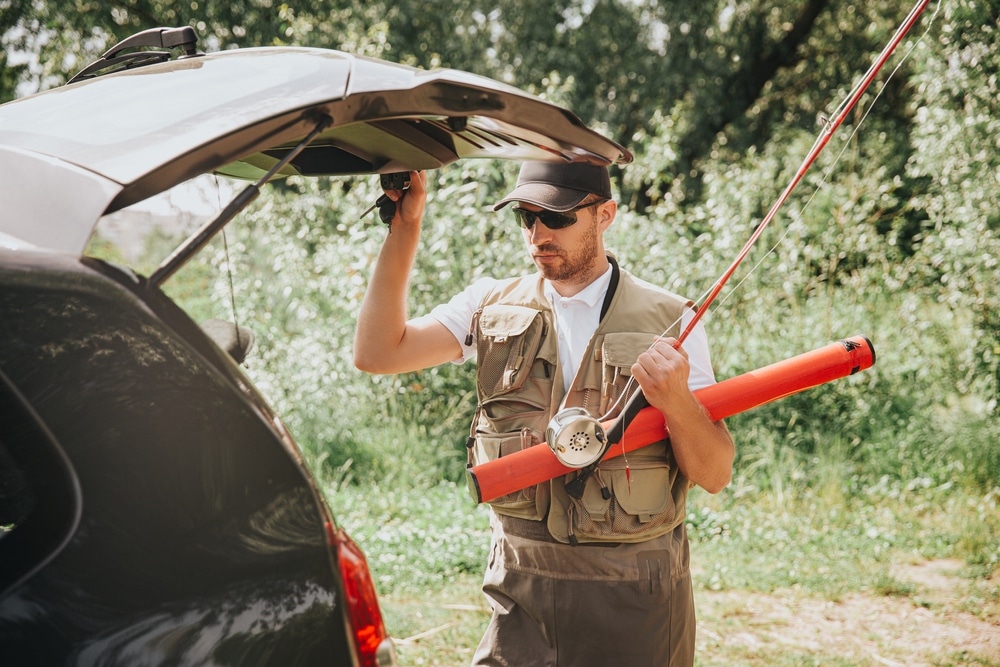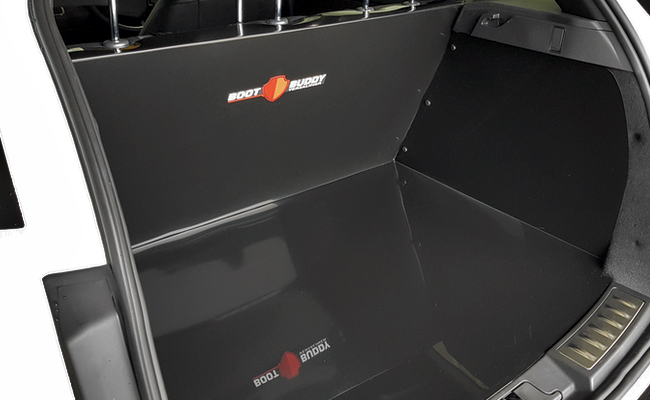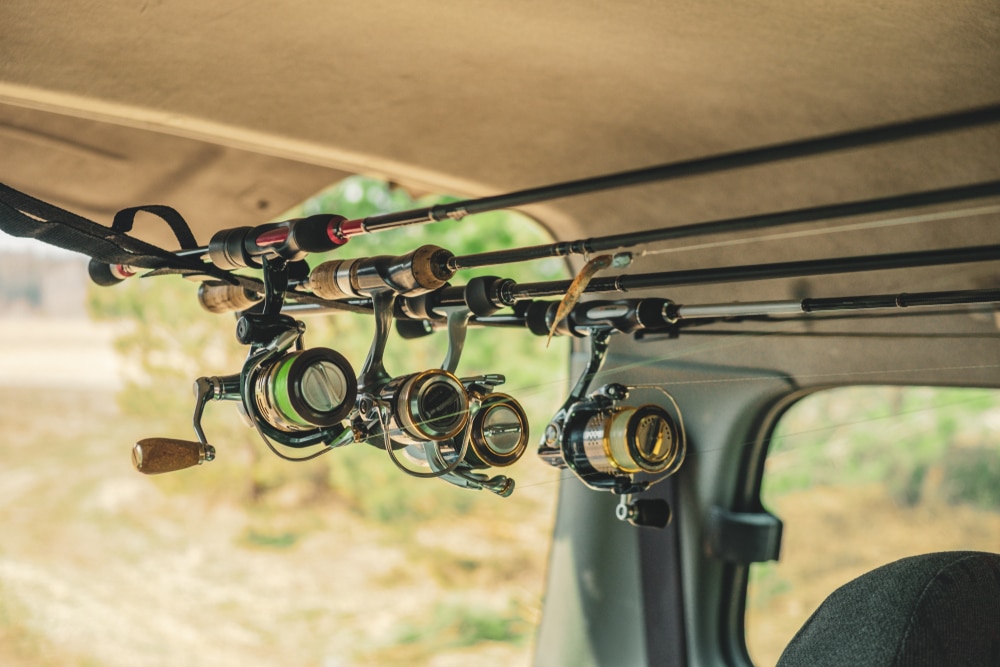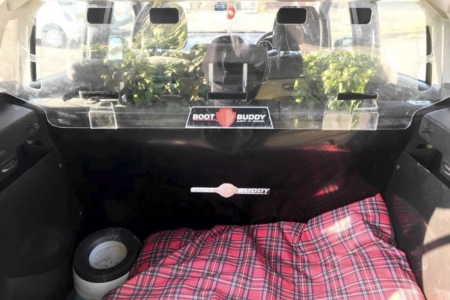How to Transport Fishing Rods in Your Car
How to travel with fishing rods in a car is a common challenge for many keen anglers. Fishing rods can be quite long and may not fit inside the car easily, especially if there are other passengers or luggage already taking up space.
Additionally, it is important to take precautions to avoid any potential damage to both the fishing rods and the car itself. Without proper protection, rods can easily get scratched, bent, or broken, and the car's interior or exterior could also be at risk of getting damaged. Careful arrangement of luggage and other items inside the car can help ensure a safe and hassle-free transportation of fishing gear.

Using the Right Car to Transport Fishing Rods
Different types of cars have varying interior spaces, which can affect how fishing rods are transported. SUVs, with their larger size and spacious interiors, have ample room to transport most smaller fishing rods without much hassle. They often have foldable rear seats or a large trunk area, allowing for easy storage of longer fishing rods.
Saloons, on the other hand, may have more limited space and a narrow trunk, making it difficult to transport longer fishing rods without bending or damaging them.
Estate cars, also known as station wagons, have a larger cargo area than saloons, providing more room for fishing rod transportation. The rear seats in estate cars can also be folded down, further increasing the available space.
Hatchbacks have a more compact size, and their rear seats can be folded to create a flat surface, which can accommodate fishing rods when needed.
Preparing Fishing Rods for Transport
When preparing fishing rods for transport, it is important to detach the fishing reels and secure the fishing lines before placing them in a car. Removing the reels helps to prevent any potential damage to the delicate components. It is recommended to place the fishing reels in separate compartments or protective cases to keep them safe.
Securing or removing the fishing lines ensures that they do not get tangled during transportation, which can be frustrating when trying to set up for a day of fishing. By properly preparing fishing rods for transport, anglers can ensure that their equipment remains in good condition and ready for use when they reach their destination.

Methods for Protecting Your Rods During Transport
One popular choice to safeguard rod tips is by using rod socks or covers. These handy accessories are specifically designed to fit over the tips of the rods, providing a protective layer that prevents them from scratching against other objects in the car. Not only do rod socks or covers shield the sensitive tips from accidental bumps or knocks, but they also help to organise and secure the rods during transportation.
Using a car boot liner is an effective way to protect both your car and fishing rods from damage. A polypropylene boot liner acts as a smooth barrier between rod and car, preventing any sharp or pointed objects from snagging or scratching. This is especially important when transporting fishing rods, as they can easily get caught on a car’s interior, damaging either the rod or the car’s trim.
Transporting Telescopic Fishing Rods
Telescopic fishing rods offer a convenient and portable solution for anglers who enjoy their fishing adventures on-the-go. Unlike traditional fishing rods, telescopic rods are designed with multiple sections that collapse into one another, allowing for easy transportation and storage. When it comes to transporting these rods inside a car, they are a favourable option as they can fit in most car types without issue. Their collapsible design makes it simple to store them in the boot or even in the backseat of a car.
Transporting Spin and Cast Fishing Rods
Transporting spin and cast fishing rods inside a car can be a bit tricky, but it is definitely easier compared to larger rods such as surf or fly fishing rods. Though some may be telescopic, many spin and cast rods do not collapse down to a shorter length, which means they require more space for transportation. If you have a car with a small boot or limited space, this might pose a problem.
However, if you have a vehicle with a larger boot space or rear seats that can be folded down, fitting spin and cast fishing rods inside should not be a major issue. One option is to lay them flat in the backseat or trunk. If you are travelling with minimal luggage, lying the rod diagonally in a cargo area ensuring they are secured to avoid any damage. When lying your rod in the back seats, ensure that they fully clear the closed door. You don't want to damage your rod by slamming a door on it.
Transporting Fly Fishing Rods
Transporting fly fishing rods inside a car can be a bit tricky compared to other types of fishing rods. While it is easier than transporting large rods like surf fishing rods, it can still be more difficult than smaller spinning rods. One challenge with fly fishing rods is that very few of them are telescopic, meaning that they cannot be easily collapsed for transportation. As a result, it is necessary to find a car with a larger boot space to accommodate the length of the rod.
To stow fly fishing rods inside a car, many place them diagonally across the backseats with the handle resting on the floor and the tip leaning against the dashboard. However, this can be dangerous and interfere with the driver. If transporting the rods inside the car, it is much safer to lie them in the boot, with the back seats collapsed if necessary. It may also be necessary to invest in a rod holder to secure the rods during transport.
Transporting Larger Fishing Rods such as Surf Rods
Transporting larger fishing rods, such as surf fishing rods, inside a car can pose some challenges due to their size. Surf fishing rods, known for being some of the largest kinds of fishing rods, can reach lengths of up to 12 feet or more. This makes it necessary to find a suitable way to transport them safely without causing damage to the car or the fishing rods themselves.
The best option is to choose a car with ample space, such as an estate or SUV, where the fishing rods can be laid through the length of the vehicle and secured properly. It is essential to ensure that the rods are tightly secured to avoid any movement or shifting during transportation, which can lead to damage. Using rod holders to secure the rods either to the roof or from the back of the vehicle to the front is recommended.
Choosing the Right Accessories When Transporting Fishing Rods
When it comes to transporting fishing rods inside a car, there are several equipment options to consider. One common solution is fishing rod holders, which can be easily installed on the inside of the vehicle. These holders come in various sizes and designs, allowing you to securely store your rods either from the boot or across the inside roof, preventing them from moving during travel.
However, if you're looking for a more cost-effective solution, DIY options can also be considered. For example, you can use bungee cords or foam noodles to create a makeshift rod holder inside the car. This allows you to protect your fishing rods without spending much money on specialised equipment - though this may not be suitable for larger fishing rods.

Storing Extra Fishing Gear
Transporting additional fishing gear, such as tackle boxes, bait containers, or nets inside a car is essential for any angler heading out for a day on the water.
When transporting these items in a car, it is important to consider their size and weight to ensure they are securely stored. Securing larger items like nets or bulky tackle boxes with bungee cords or straps can prevent them from shifting during transit, ensuring a safe and comfortable ride for all passengers.
Alternatively, anti-slip boot mats can provide a non-slip surface to place fishing equipment. These are often far more convenient and also protect the boot of the car from any dirt or spills that might occur during a fishing trip.
Storing Extra Fishing Gear
Driving cautiously and adhering to traffic rules is crucial when transporting fishing rods inside a vehicle to avoid accidents. Fishing rods, usually long and fragile, require extra care while being transported. Sudden brakes or sharp turns can cause them to shift, potentially leading to accidents.
By driving cautiously and adhering to traffic rules, the risk of such mishaps can be significantly reduced. It is important to secure the fishing rods properly inside the vehicle, using appropriate straps or mounts, and ensure they are not obstructing the driver's view or interfering with the operation of the vehicle.



